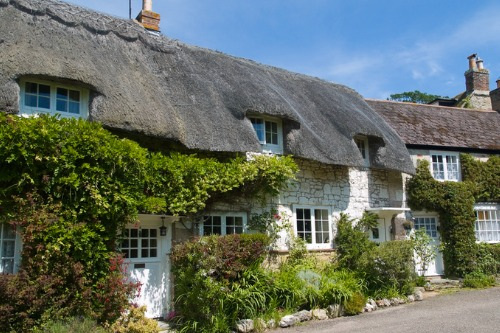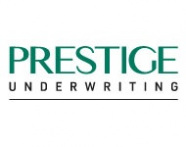Expert view: Protecting and maintaining your thatched property

Authored by Chris Duck, Head of Property Underwriting, Prestige Underwriting
A discovery by an amateur Archaelogist in 1983 led to the uncovering of what would become known as The Howick House. Dating back to 7600 BC it is believed to be the earliest known Thatched dwelling in the United Kingdom. Whilst there may be other properties which lay claim to this title one thing which cannot be debated is the charm, historical significance and unique aesthetic appeal of many of the 60,000 Thatched homes which exist up and down the country today.
Whilst highly desirable in no small part owing to their picturesque charm, there are some quite specific risks associated with Thatched properties compared to properties constructed with more conventional roofing materials. As with all risks though these can be managed and need not impact your enjoyment of living in one of these idyllic properties.
Fire is the risk which most people automatically associate with a Thatched property. Statistically a property with a Thatched roof is no more likely to catch fire than a property with a standard construction roof, the key difference being that when a Thatched property does suffer a fire the damage can be more severe. It is therefore of paramount importance that steps are taken to understand the potential causes of fire and take appropriate steps to prevent them.
The main evidenced cause of fires in Thatched properties relate to the chimney, whether this be a chimney fire or a fire caused by ejected embers igniting the Thatch.
I will now detail some of the key questions which we at Prestige Underwriting ask and detail some of the risk mitigation measures which we actively encourage all Thatched property owners to undertake in order to counter both of these risks.
- We will be very keen to know the height of your chimney above the ridge. We will always look for this to be a height of at least 1.8 metres. In very simple terms the greater the height of the chimney the higher the dispersal of any embers away from the Thatch which we would hope in turn will reduce the risk of ignition.
- Bi-annual cleaning of your Chimney is something which we actively insist on – this again is extremely important in the reduction of the risk of ejected embers.
- We would actively discourage the use of Spark Arrestors – whilst historically they may have been viewed as a positive the reality is that they can become clogged and in turn restrict the free flow of combustion gases
- Have the chimney inspected regularly by a registered chimney engineer to ensure the integrity of the liner and brickwork
- Always seek professional advice ahead of the installation of any form of Woodburning stove and have it fitted by a reputable supplier
- Give serious consideration to the installation of a bird guard.
- Regular inspection of the electrics in your property can help identify any issues before they go on to cause a more serious problem. We would recommend an inspection at least every 5 years.
In addition to taking steps to reduce the risk of fire it is equally important to maintain the Thatch. It will naturally degrade over time resulting in the requirement of a complete rethatch. There are many things which can be done to maintain the integrity of the roof for as long as possible:
- We would encourage inspection of the roof by a qualified Thatcher at least every 10 years
- Take all possible steps to allow the roof to dry. The presence of trees and plants may impede the ability of the sun and wind to dry the roof, they may also prevent the dispersal of rain water. A damp roof will be more prone to algae and moss which in turn will keep the roof wet.
- Ensure that any tradesperson who may come into contact with your roof, even if not directly working on it, is familiar with the precautions which they need to take when coming into contact with a Thatched roof. As an example, damage could easily be done by somebody resting a ladder against it or by walking on the roof. Even the smallest of divots can accelerate damage to the Thatch.
- Wire netting can be installed as a means of reducing the likelihood of damage caused by birds who can be prone to pulling out straws for nesting.
Thatched properties epitomise the quintessential English countryside home. Many possess a real sense of history and character which cannot be replicated in many more conventional properties. Whilst the maintenance and work associated with owning and living in a Thatched property can appear daunting at first, adopting the very simple steps outlined in this article will ensure that they can continue to be enjoyed and grace our villages and countryside for many generations to come.
About the author Chris Duck
As Head of Property Underwriting, Chris works closely with the Senior Management team to develop the Home underwriting strategy and ensure successful implementation across the underwriting teams. Chris works closely with key stakeholders including Broker and Insurer partners to deliver value and build successful trading relationships.
About Prestige Underwriting
Long established and highly trusted across the UK and Ireland for developing non-standard and niche insurance products, we enable brokers and partners of diverse size and scale to compete in a highly dynamic marketplace.
Our 130-strong team-work in partnership with around 1,300 brokers and partners with the aim of not only meeting their needs but, wherever possible, exceeding their expectations.
At Prestige Underwriting we take a partnership approach to understanding what our clients' needs are and they find that we are expert and agile specialists in what we offer. We are efficient, flexible and approachable which gives us an advantage and edge to ensure we always deliver for our partners.
Our professional, customer centric, agile and flexible approach to developing, delivering and continually enhancing our products and service offering has been key to securing and maintaining longstanding relationships with our Broker network since 1997.

